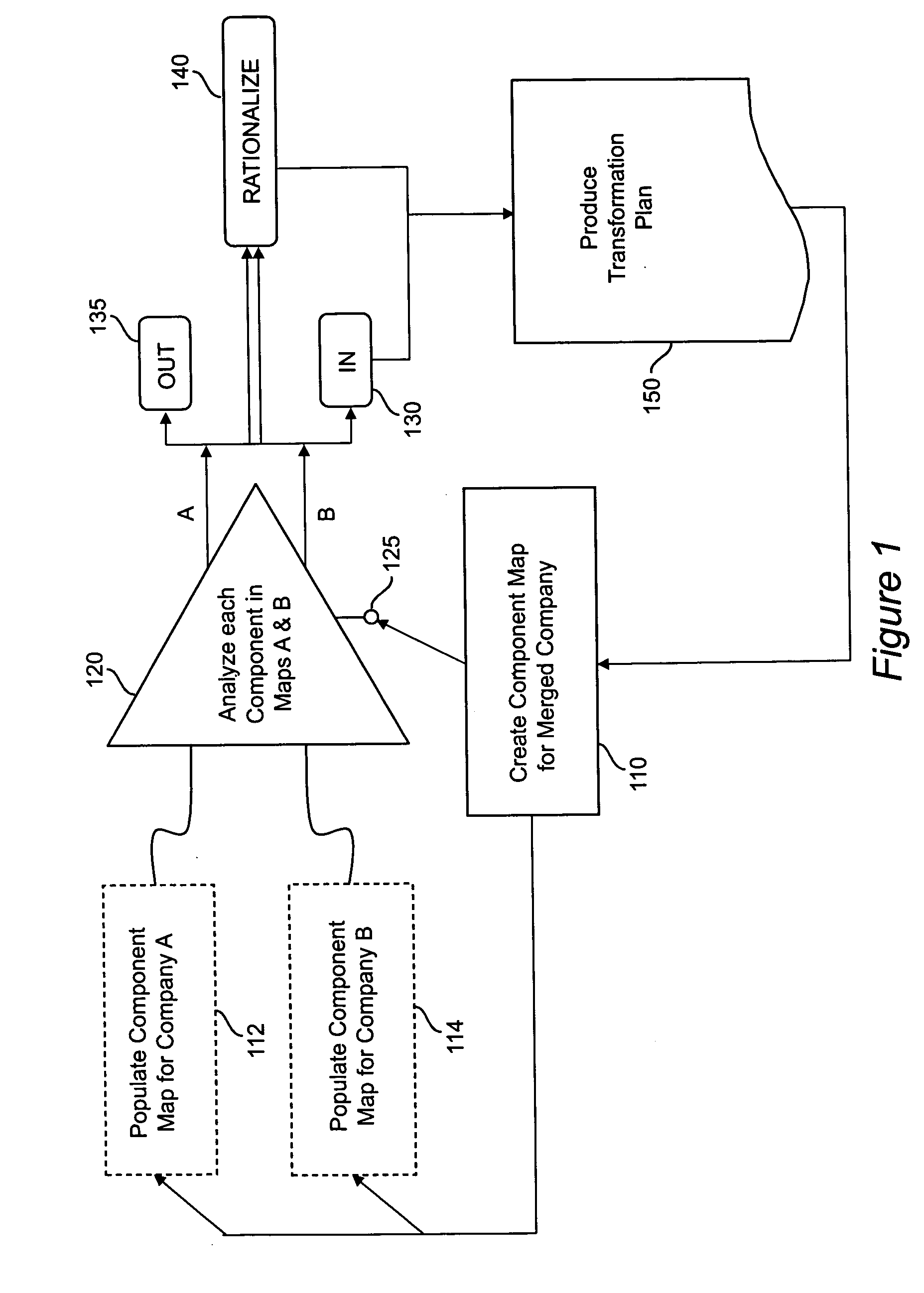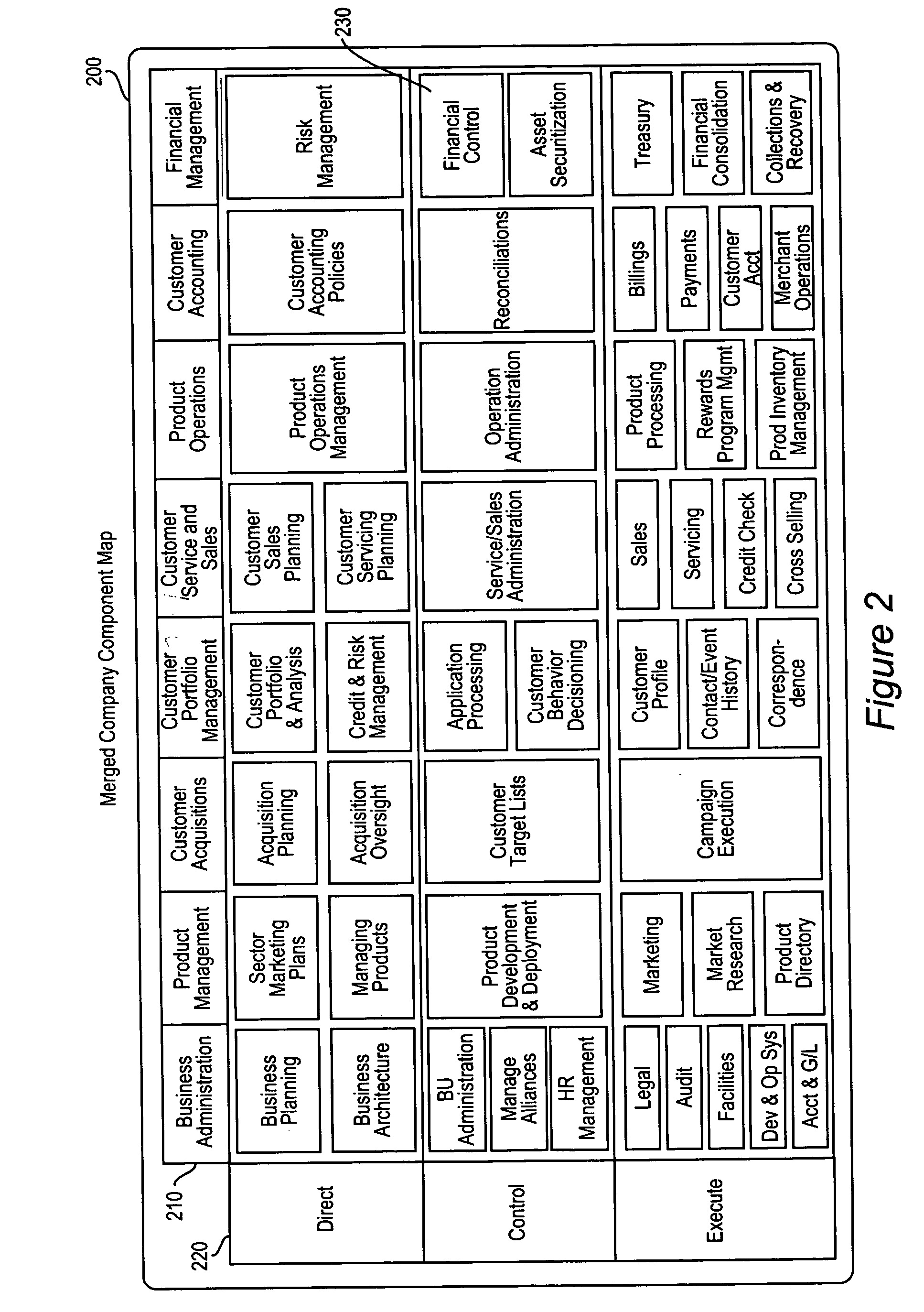Mergers and acquisitions using component business model
a business model and component technology, applied in the field of component business models, can solve the problems of difficult to evaluate two relatively similar capabilities in different organizations, easy to see, and often fails to meet the expectations of key players combined on that basis
- Summary
- Abstract
- Description
- Claims
- Application Information
AI Technical Summary
Benefits of technology
Problems solved by technology
Method used
Image
Examples
Embodiment Construction
[0020] The method of the invention may be understood with reference to FIG. 1. The object of the invention is to support the creation of the merged company that combines Company A and Company B. The first step, therefore, is to create a target component map 110 for the merged company. This map is then used as the model for creating component maps for each of the companies that are merging, in this example a component map 112 for Company A and a component map 114 for Company B.
[0021] Each of these component maps (110 for the merged company, 112 for Company A and 114 for Company B) are prepared using the approach described in the above referenced foundation patent application. That is, the component map created reflects the target state of the company desired by company management. For the purposes of a merger or acquisition, however, the target state (112 and 114) for the companies to be combined is the same as the target state 110 of the company resulting from the merger or acquisi...
PUM
 Login to View More
Login to View More Abstract
Description
Claims
Application Information
 Login to View More
Login to View More - R&D
- Intellectual Property
- Life Sciences
- Materials
- Tech Scout
- Unparalleled Data Quality
- Higher Quality Content
- 60% Fewer Hallucinations
Browse by: Latest US Patents, China's latest patents, Technical Efficacy Thesaurus, Application Domain, Technology Topic, Popular Technical Reports.
© 2025 PatSnap. All rights reserved.Legal|Privacy policy|Modern Slavery Act Transparency Statement|Sitemap|About US| Contact US: help@patsnap.com



